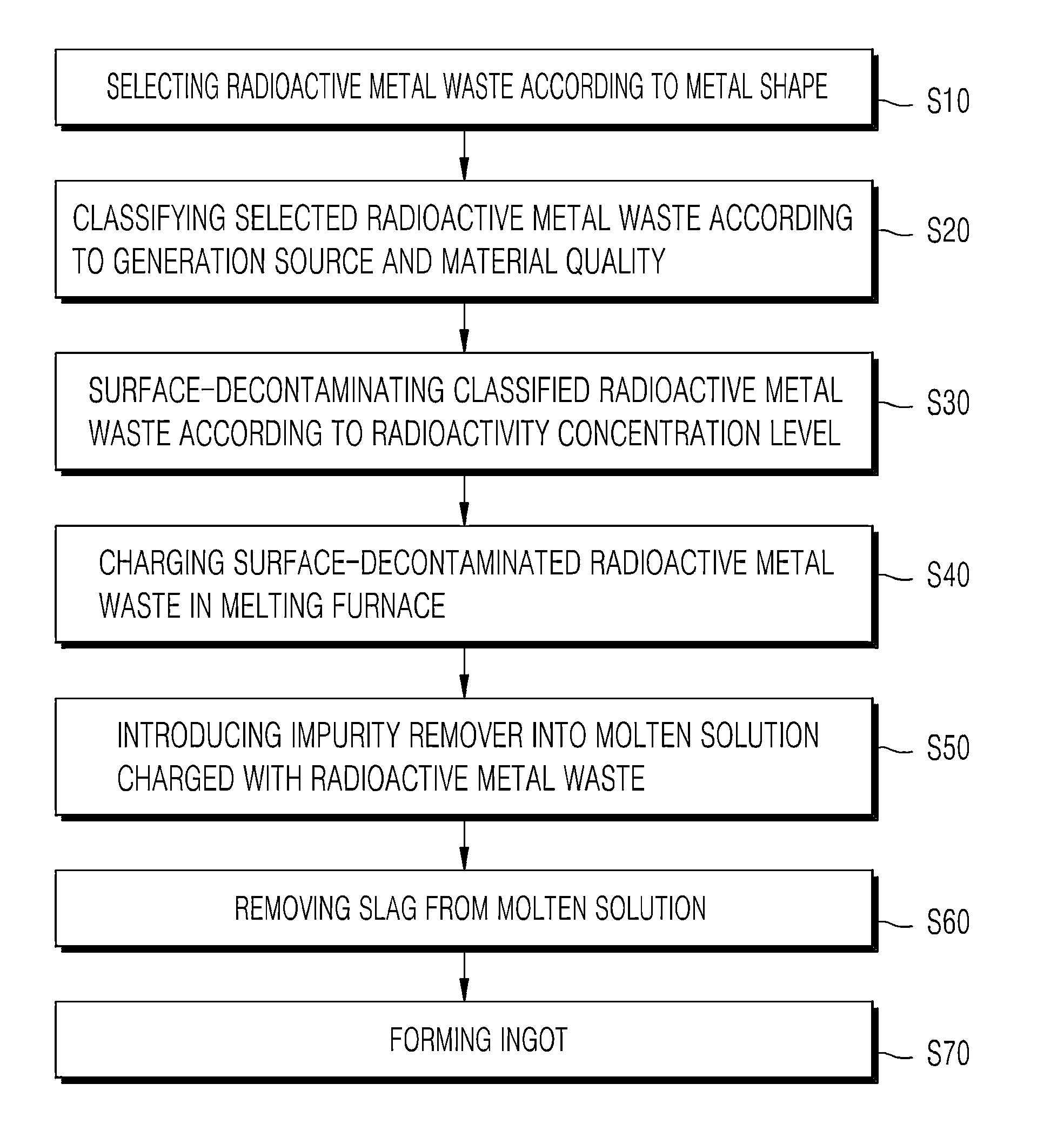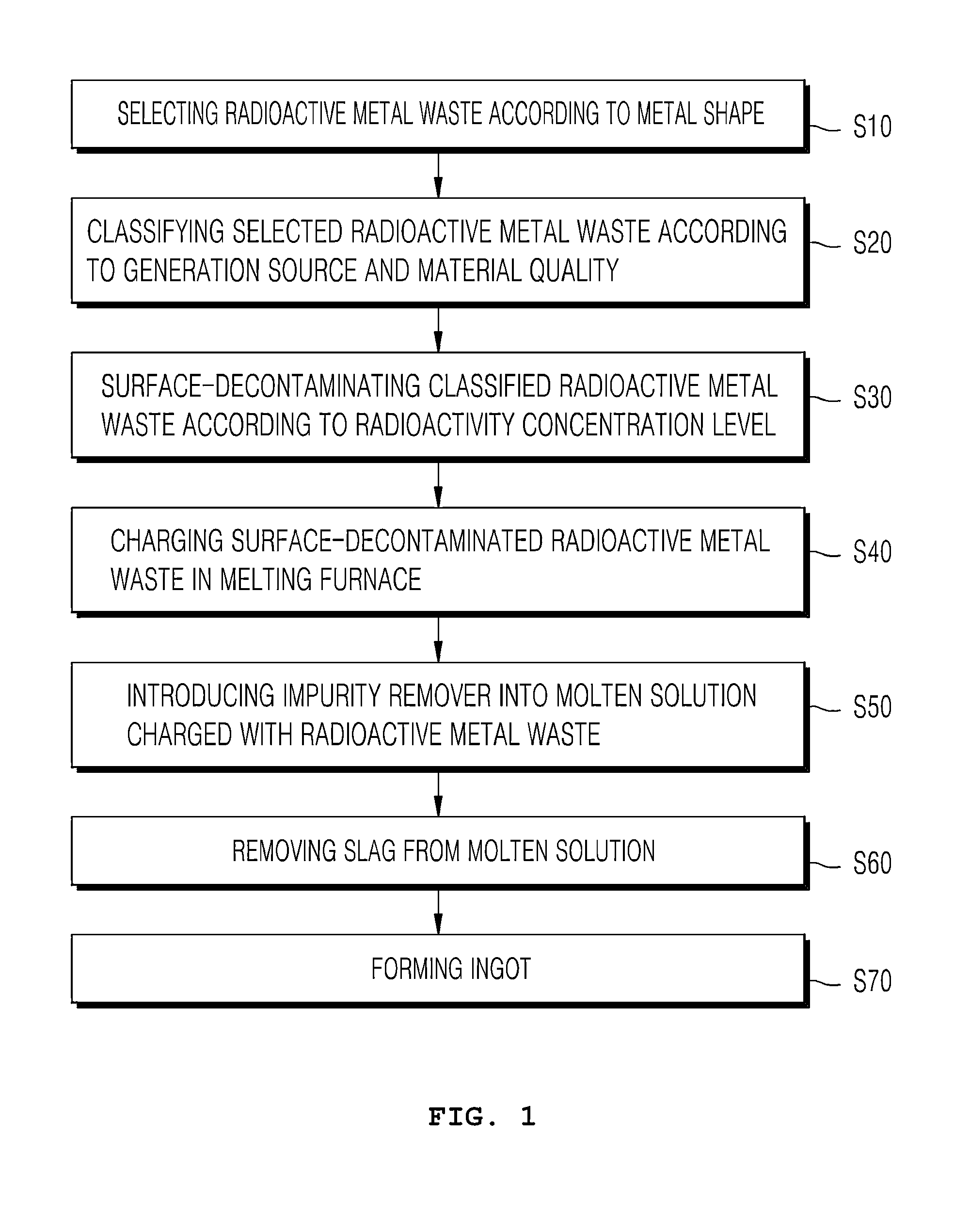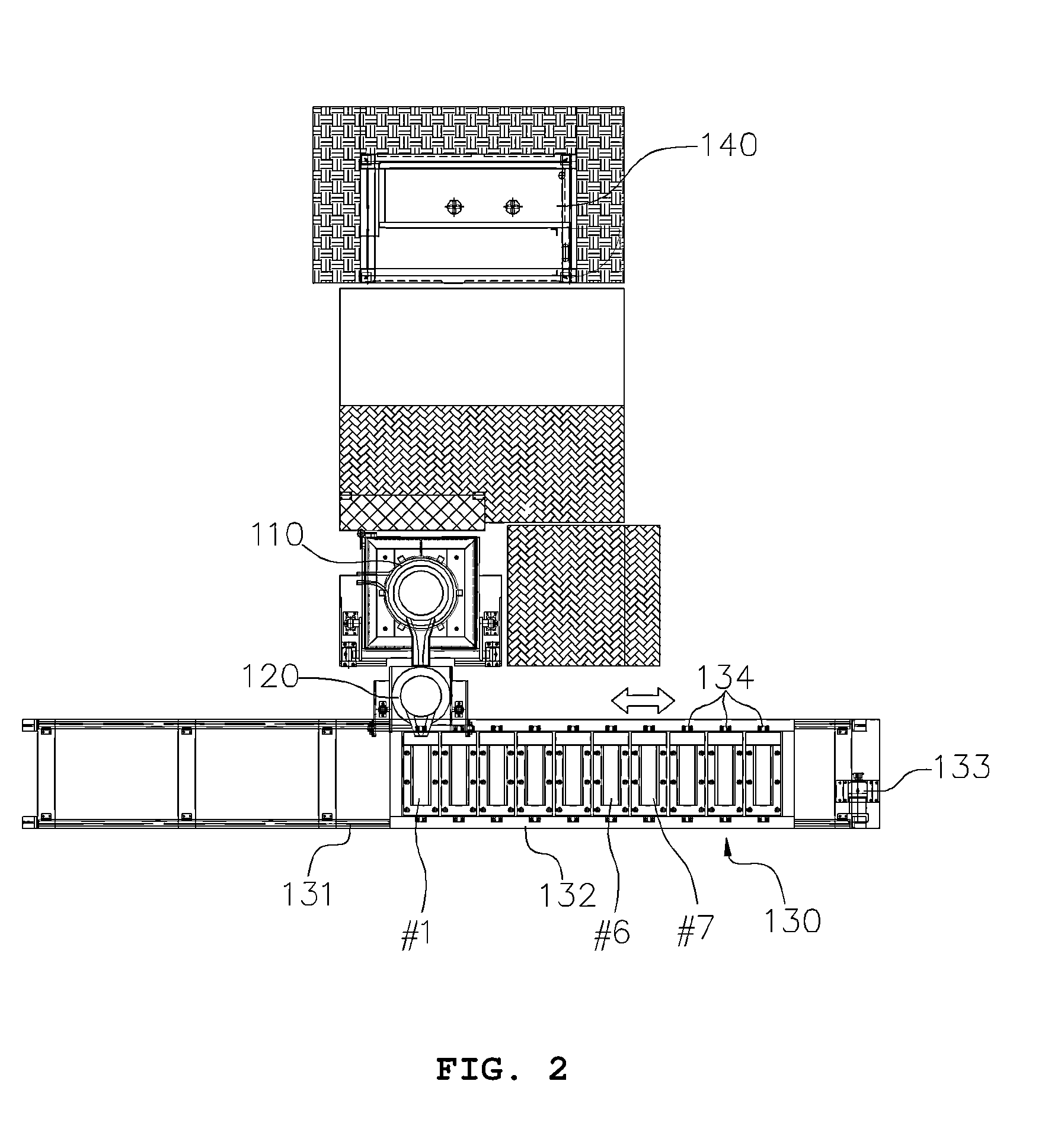Method of treating radioactive metal waste using melt decontamination
a radioactive metal and melt decontamination technology, applied in the direction of radioactive decontamination, chemistry apparatus and processes, nuclear engineering, etc., can solve the problems of large amount of radioactive waste generated, radiation products, environmental protection and economic efficiency loss, etc., and achieve the effect of improving quality
- Summary
- Abstract
- Description
- Claims
- Application Information
AI Technical Summary
Benefits of technology
Problems solved by technology
Method used
Image
Examples
example 1
Preparations for Test
[0050](1) Test Summary
[0051]In order to estimate the material balance attributable to the melt decontamination of the present invention, 1 kg of UO2 having a concentration of 4.65 w / o was charged in a non-contaminated metal material, and one sample was extracted from a molten solution and then the gamma nuclide analysis of the one sample was conducted using ICP-MS (inductively coupled plasma mass spectroscopy) and a high-purity germanium (HPGe) detector. Then, two ingots were selected from the produced ingots, samples were extracted from nine portions per single ingot, and then the uranium concentration of each of the samples was analyzed using ICP-MS to prove the homogeneity of the molten solution. Further, gamma nuclide analysis of the slag occurring during the melt decontamination was carried out using a high-purity germanium (HPGe) detector and the ICP-MS analysis thereof were simultaneously conducted to grasp the decontamination coefficient and estimate the...
example 2
Performance of Melt Decontamination
[0055]The melt decontamination test was conducted for about 3 hours according to the following processes. Further, the work of separating the ingot from a mold was conducted the day after the melt decontamination test because this work must be conducted in a state in which the ingot has sufficiently cooled. The melt decontamination process according to the present invention is shown in FIG. 1, and the melt decontamination process according to Example 1 will be described in detail as follows.
[0056]In the process of selecting metal waste, the metal waste generated from nuclear fuel processing facilities is considered to be a material contaminated by radioactive material. Here, flat metal waste having a simple and smooth geometric shape such as filter frames, waste drums and the like; and metal waste, such as nuts, bolts and the like, which cannot be easily surface-decontaminated by conventional methods because they have a complicated geometric shape,...
example 3
[0061]Samples were extracted from the ingot and slag produced in the process of conducting melt decontamination according to Example 2 of the present invention, and the extraction of the samples was carried out according to ASTM-1806.
[0062]The results of analyzing the extracted samples are given in Table 1. Meanwhile, among ten ingots melt-decontaminated according to Example 1, the ingots fabricated in the first mold, the sixth mold and the seventh mold are represented by #1, #6 and #7, respectively (refer to FIG. 2).
TABLE 1SampleGamma extractionnuclideICP-MSClassificationsmethodanalysisanalysisRemarks#3 ingot (23.6 kg)milling1000 mL1 EA#6 ingot (36.6 kg)drilling3 × 3 EA#7 ingot (22.4 kg)drilling3 × 3 EAMolten solutionmilling1000 mL1 EAcrucible(6.4 kg)typeSlag (—)—3 EASumabout 2000 mL23 EA
[0063]As given in Table 1 above, among the ten ingots produced according to Example 2, three ingots were selected (refer to FIG. 2), and nine samples were extracted from each of th...
PUM
 Login to View More
Login to View More Abstract
Description
Claims
Application Information
 Login to View More
Login to View More - R&D
- Intellectual Property
- Life Sciences
- Materials
- Tech Scout
- Unparalleled Data Quality
- Higher Quality Content
- 60% Fewer Hallucinations
Browse by: Latest US Patents, China's latest patents, Technical Efficacy Thesaurus, Application Domain, Technology Topic, Popular Technical Reports.
© 2025 PatSnap. All rights reserved.Legal|Privacy policy|Modern Slavery Act Transparency Statement|Sitemap|About US| Contact US: help@patsnap.com



